A contraceptive patch offers a lot of advantages. Apart from being highly effective the patch has the efficiency rate of up to 99% in birth control when used properly – a contraceptive patch gives many benefits. Some of the benefits are similar to those offered by the birth control pill. These are reduction in the appearance of acne, a regular menstrual cycle, decreased PMS symptoms and reduced risk for endometrial and ovarian cancers.
Other advantages, different from those offered by the birth control pill, include comfort in the use of the patch. A contraceptive patch is applied only weekly, therefore a woman does not have to care about contraception on a daily basis. Since this method changes the cervical mucus, it decreases the risk for pelvic inflammatory disease. A contraceptive patch is a reversible form of birth control since a woman regains fertility immediately after discontinuation of use. The occurrence of possible side effects disappears straight after the discontinuation of use.
Side effects of contraceptive patch
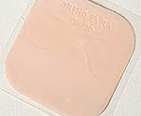 As all hormonal contraception, a contraceptive patch has a few side effects associated with hormonal component of this method of contraception. These side effects are similar to those of the birth control pill. Most women can experience spotting and breakthrough bleeding during the first two or three months of use. They can also have tender breasts. Nausea may occur on the first days of use but should disappear afterwards. If nausea continues or occurs with the change of each patch or menstrual cycle, a woman should ask her doctor’s advice. Vomiting is very rear. Mood changes may occur at the very beginning of use. Headaches are also one of the most frequent side effects associated with the use of the patch. However, if they become more frequent and harder than normally a woman should seek her doctor’s consultation.
As all hormonal contraception, a contraceptive patch has a few side effects associated with hormonal component of this method of contraception. These side effects are similar to those of the birth control pill. Most women can experience spotting and breakthrough bleeding during the first two or three months of use. They can also have tender breasts. Nausea may occur on the first days of use but should disappear afterwards. If nausea continues or occurs with the change of each patch or menstrual cycle, a woman should ask her doctor’s advice. Vomiting is very rear. Mood changes may occur at the very beginning of use. Headaches are also one of the most frequent side effects associated with the use of the patch. However, if they become more frequent and harder than normally a woman should seek her doctor’s consultation.
There are certain conditions women should consider before using the patch. Some women may be allergic to the material of a contraceptive patch; therefore if any skin irritation, itching or changes in skin color appears a woman should consult her doctor since these symptoms may indicate increased sensitivity to a contraceptive patch. Women should also know that there is a risk for weight gain. Although it is very individual and some women may even lose weight.
Although health risks are very rare but still are possible. The use of a contraceptive patch increases the risk for blood clots in the legs and lungs. This risk is even higher for smokers, especially those, who are older than 35 years. Women with the history of blood clots and varicose veins should discuss the use of hormonal contraception with their health care provider. There is also an increased risk for cardiovascular disorders, such as stroke or heart attack. As high cholesterol, diabetes, obesity, high blood pressure increase the risk for blood clots women having these conditions are basically not recommended to use hormonal birth control.
Although a contraceptive patch was found to be highly effective in birth control , there are certain factors that may affect its efficiency. Effectiveness of the patch may decrease with the improper use. In addition, women who weigh more than 198 pounds should choose other form of birth control as efficiency of the patch may be reduced. Birth control efficiency may decrease when other certain drugs are taken at the same time. These include antifungals, seizure medications and possibly antibiotics. Always ask your doctor about drug interactions with a contraceptive patch. Vomiting and diarrhea usually does not interfere with contraceptive efficiency of the patch.
Remember that the patch does not provide any protection against sexually transmitted diseases, therefore you should use male condoms each time you have sexual intercourse.
Since a contraceptive patch is a new form of hormonal contraception, long-term effects and risks are not yet known. Although it is a safe and effective mean of birth control, do not hesitate to discuss all the advantages and disadvantages of the method with your doctor before use of a contraceptive patch.
 There are a few different methods of natural family planning. These include the ovulation method, the rhythm/calendar method and the basal body temperature charting. All of these techniques are based on a presumption that a woman can conceive only during the days around ovulation.
There are a few different methods of natural family planning. These include the ovulation method, the rhythm/calendar method and the basal body temperature charting. All of these techniques are based on a presumption that a woman can conceive only during the days around ovulation. Male condoms, as one of the oldest forms of male contraception still in use today, have been used for thousands years. They used to be produced from various materials, including animal intestines, linen and cotton.
Male condoms, as one of the oldest forms of male contraception still in use today, have been used for thousands years. They used to be produced from various materials, including animal intestines, linen and cotton. 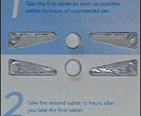 There are several mechanisms due to which
There are several mechanisms due to which 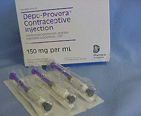 Injectable contraceptives
Injectable contraceptives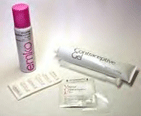 They are chemical compounds, mostly containing nonoxynol-9, octoxynol-9, menfegol or benzalkonium chloride. They protect against pregnancy when inserted into vagina in a right way and time. The effectiveness of
They are chemical compounds, mostly containing nonoxynol-9, octoxynol-9, menfegol or benzalkonium chloride. They protect against pregnancy when inserted into vagina in a right way and time. The effectiveness of 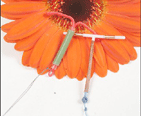 An intrauterine device, mostly known as an IUD, is a flexible device that protects from unexpected pregnancy when inserted into a woman’s uterus through the vagina. An IUD is one of the most popular methods of birth control among fertile women worldwide. Some statistics claim that approximately 15% of all fertile women in the world choose an intrauterine device to protect from pregnancy. This is an effective, comfortable and long-term method of contraception for fertile women.
An intrauterine device, mostly known as an IUD, is a flexible device that protects from unexpected pregnancy when inserted into a woman’s uterus through the vagina. An IUD is one of the most popular methods of birth control among fertile women worldwide. Some statistics claim that approximately 15% of all fertile women in the world choose an intrauterine device to protect from pregnancy. This is an effective, comfortable and long-term method of contraception for fertile women. Women should be aware that an
Women should be aware that an 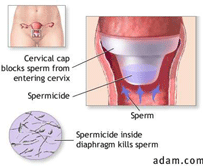 A cervical cap should be inserted into the vagina a few hours before having sex. Most women like it because they do not have to care about other
A cervical cap should be inserted into the vagina a few hours before having sex. Most women like it because they do not have to care about other